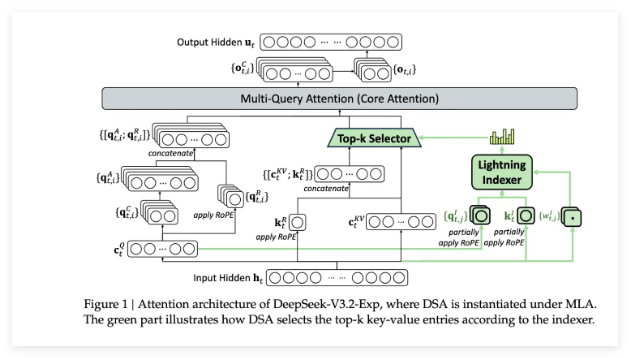想要用Python+whisper.cpp实现纯本地化语音转文字,我的操作环境如下:
MacOS Ventura 13.0
Python3.7
conda
PyAudio
一开始打算用PyAudio,解决了头文件找不到的问题(网上教程很多)之后,仍然遇到:
Could not import the PyAudio C module 'pyaudio._portaudio'. Traceback (most recent call last): File "<stdin>", line 1, in <module> File "/.../site-packages/pyaudio/__init__.py", line 111, in <module> import pyaudio._portaudio as pa ImportError: dlopen(/.../site-packages/pyaudio/_portaudio.cpython-37-darwin.so, 0x0002): symbol not found in flat namespace '_PaMacCore_SetupChannelMap' 通过命令可以检查编译的so文件对应命名空间情况
nm -g /.../site-packages/pyaudio/_portaudio.cpython-37-darwin.so | grep " _PaMacCore_SetupChannelMap" 显示为:
U _PaMacCore_SetupChannelMap
这个 U 表示该符号未定义(undefined)。
另外检查发现 PaMacCore 相关的符号都是未定义的。
这说明在编译链接这个 Python 扩展模块时,没有正确包含 PaMacCore 相关的符号。反复尝试重装portaudio(homebrew包)和pyaudio,还是解决不了,目测是portaudio/pyaudio包对ventura版本的支持还是没做好,需等待进一步新版本,于是放弃pyaudio转而使用sounddevice。
sounddevice
一开始,我直接让AI帮忙基于sounddevice程序包给我一段代码,但怎么都录不上音乐,调整过输入设备指定等代码还是不行。于是从官方文档找了一段示例代码:https://python-sounddevice.readthedocs.io/en/0.4.6/examples.html#real-time-text-mode-spectrogram
让AI基于该代码去一次次修改,然后再回过头来删掉没什么用的代码,留下一个带注释的极简版本:
import sounddevice as sd import numpy as np import wave import time # 设置录音的时长和采样率 duration = 5 # seconds sample_rate = 44100 channels = 1 device_info = 'MacBook Pro Microphone' # 创建一个用于存储录制音频的缓冲区 buffer = [] # 定义回调函数来获取输入数据 def callback(indata, frames, time, status): global buffer buffer.append(indata.copy()) # 创建一个输入流来录制音频 print(device_info) print(sample_rate) with sd.InputStream(callback=callback, device=device_info, samplerate=sample_rate, channels=1): print('Recording...') sd.sleep(duration * 1000) print('Recording finished') # 将缓冲区数据保存到WAV文件 buffer = np.concatenate(buffer, axis=0) filename = 'recorded_audio.wav' with wave.open(filename, 'w') as wf: wf.setnchannels(1) wf.setsampwidth(2) # 2 bytes for 16-bit samples wf.setframerate(sample_rate) # Convert buffer to 16-bit integer before writing wav_data = (buffer * np.iinfo(np.int16).max).astype(np.int16) wf.writeframes(wav_data.tobytes()) print(f"File saved as {filename}") 终于把声音给录上了。回过头来查看,是因为buffer的定义,一开始AI给我生成的代码是:
# 创建一个用于存储录制音频的缓冲区 buffer = np.zeros((duration * sample_rate,)) 其实只需要将buffer声明为空数组就可以了。
AI写代码坑还是很多啊,使用某个Python程序包的时候,最好可以先把官方文档里面的代码示例塞给AI之后再让他去生成代码,省掉来回折腾自己调试做各种问题排查。
结合whisper.cpp的调用将整体程序整合到如下,后面进一步优化再发到git上来:
import sounddevice as sd import numpy as np import wave import os import subprocess import gradio as gr import threading import sys import time import struct # 录音参数 SAMPLE_RATE = 44100 CHANNELS = 1 DTYPE = np.int16 SEGMENT_DURATION = 5 # 每5秒为一个段 device_info = 'MacBook Pro Microphone' buffer = [] segment_files_path = '/.../buffers' trans_target_file = '/.../trans.log' # 录音回调 def callback(indata, frames, time, status): global buffer, segment_frames_recorded segment_frames_recorded += frames buffer.append(indata.copy()) def start_segment_recording(segment_filename): print("start_segment_recording start: ",segment_filename) global buffer, wavfile, recording, segment_frames_recorded segment_filename = "{}/{}".format(segment_files_path, segment_filename) buffer = [] wavfile = wave.open(segment_filename, mode="wb") wavfile.setnchannels(CHANNELS) wavfile.setsampwidth(2) wavfile.setframerate(SAMPLE_RATE) segment_frames_recorded = 0 start_time = time.time() with sd.InputStream(callback=callback, device=device_info, channels=CHANNELS, samplerate=SAMPLE_RATE) as stream: print("InputStream starting") while True: if time.time() - start_time > SEGMENT_DURATION: break print("Recording ended") buffer_mix = np.concatenate(buffer, axis=0) wav_data = (buffer_mix * np.iinfo(np.int16).max).astype(np.int16) wavfile.writeframes(wav_data.tobytes()) stop_segment_recording(segment_filename) def stop_segment_recording(segment_filename): print("stop_segment_recording start") global wavfile, trans_target_file # segment_filename = "{}/{}".format(segment_files_path, segment_filename) wavfile.close() transcription = run_whisper(segment_filename) print(transcription) with open(trans_target_file, 'a') as f: f.write(transcription + '\n') def run_whisper(segment_filename): segment_filename_out = "{}{}".format(segment_filename[:-4],'_out.wav') command = f'ffmpeg -i {segment_filename} -acodec pcm_s16le -ac 1 -ar 16000 {segment_filename_out}' print(command) subprocess.run(command, shell=True) command = f'/.../whisper.cpp/main -m /.../whisper.cpp/models/ggml-large.bin -l zh --output-txt -f "{segment_filename_out}"' subprocess.run(command, shell=True) vtt_filename = segment_filename_out+".txt" with open(vtt_filename) as file: transcription = file.read() return transcription def recording_thread(): print("recording_thread start") segment_index = 0 while recording: segment_filename = f"segment_{segment_index}.wav" start_segment_recording(segment_filename) segment_index += 1 try: global recording recording = True thread = threading.Thread(target=recording_thread()) thread.start() print("Recording...") except KeyboardInterrupt: sys.exit('Interrupted by user') except Exception as e: sys.exit(type(e).__name__ + ': ' + str(e)) 




















